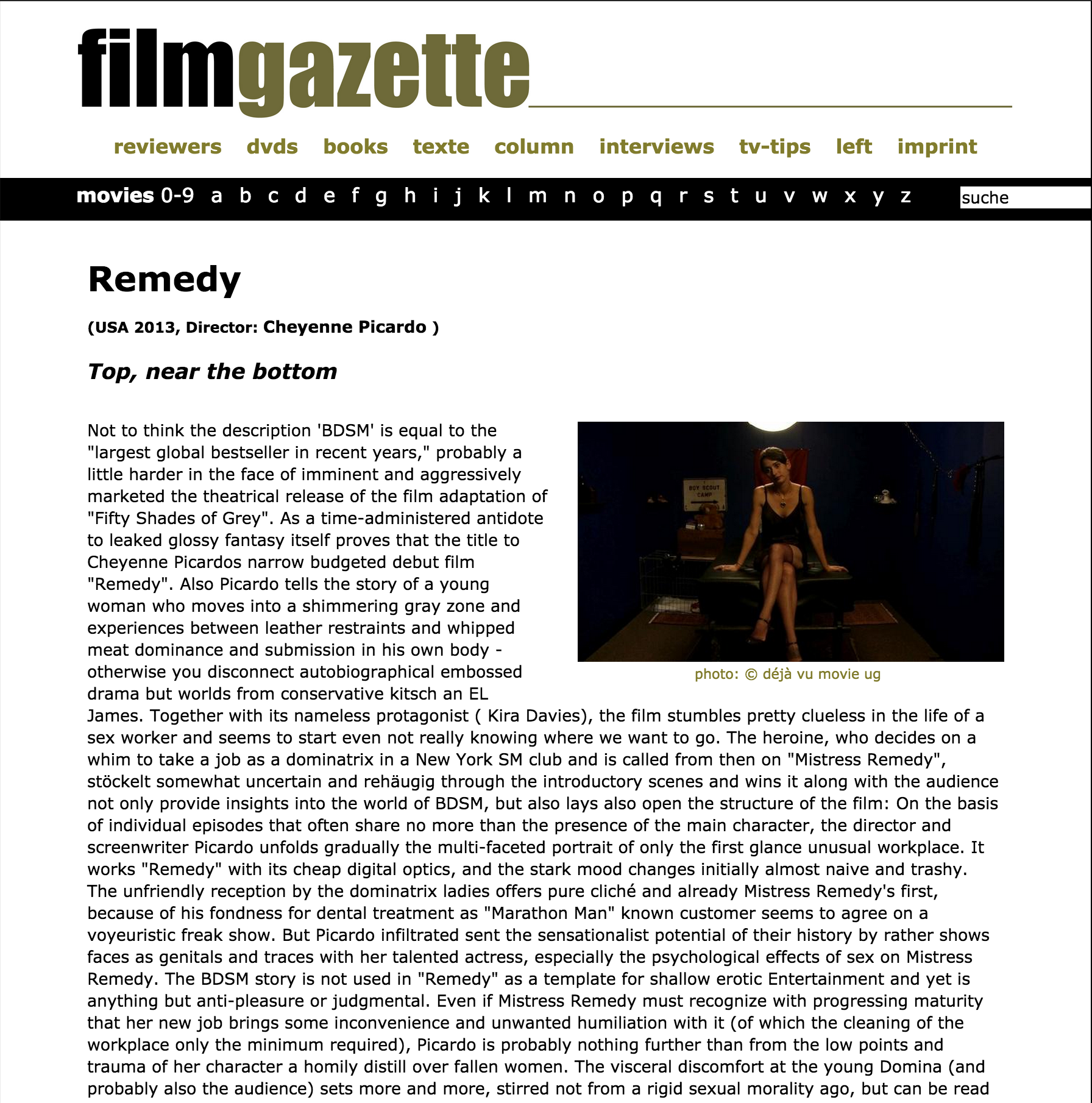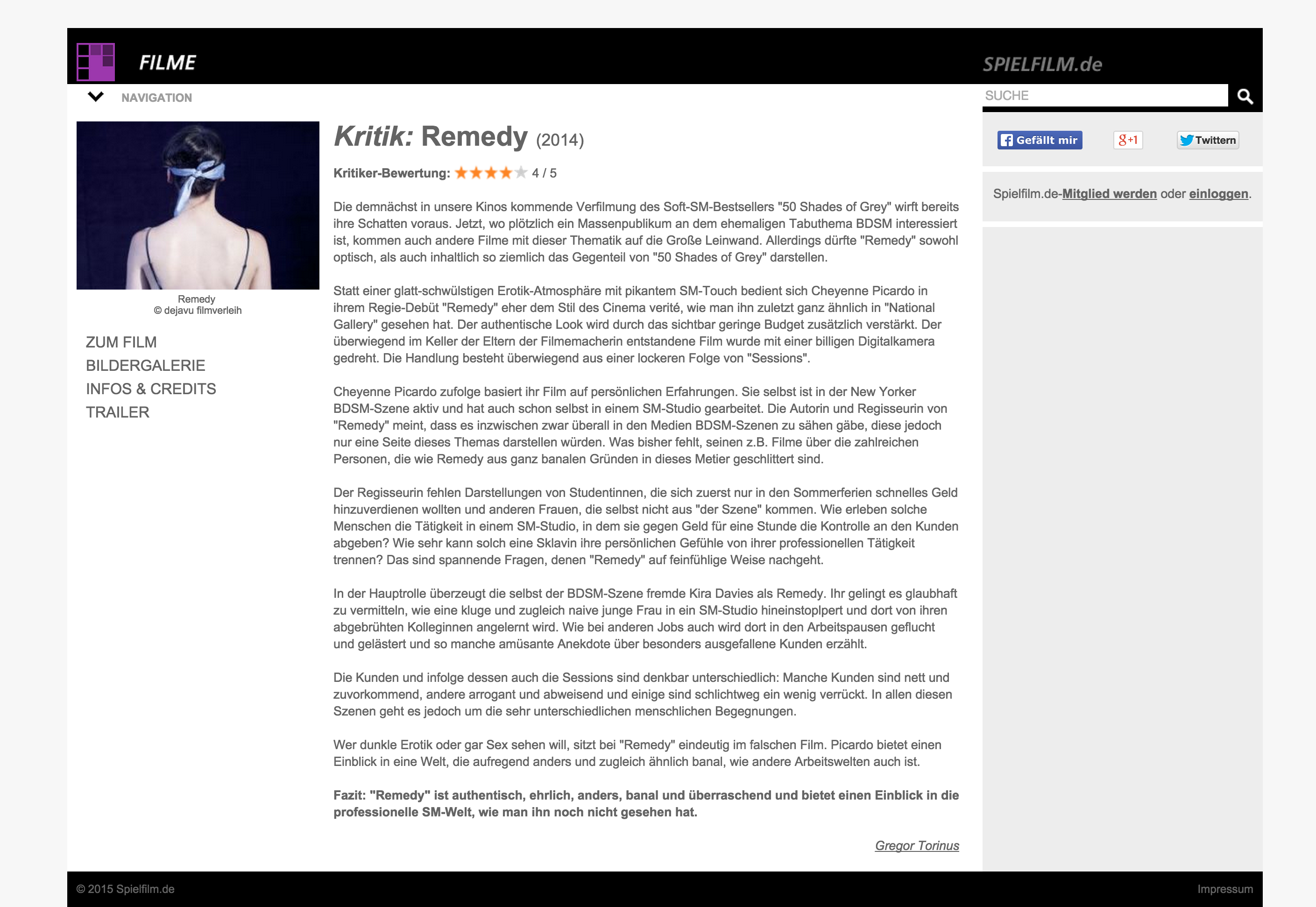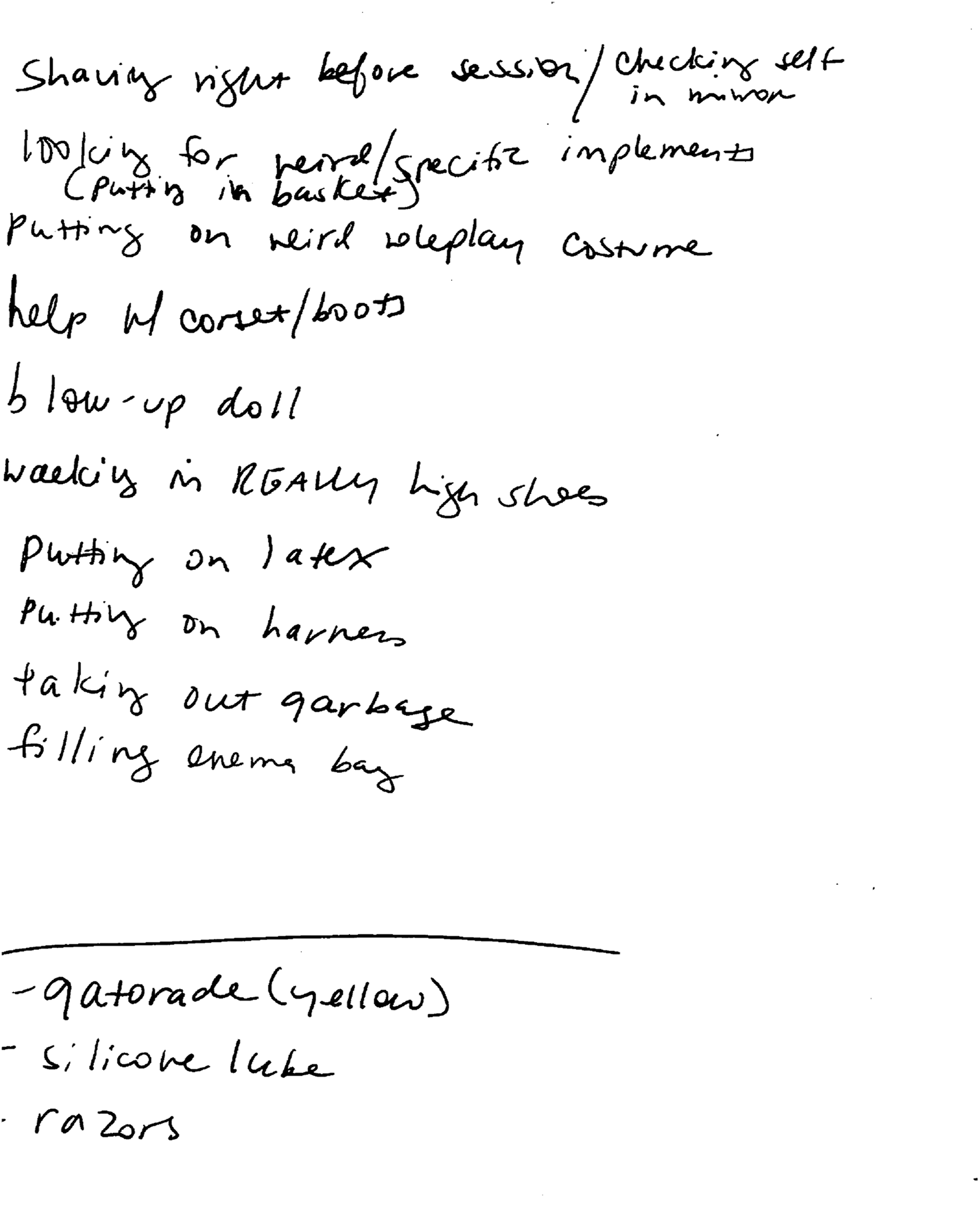REVIEW in Filmgazette.de
Her autobiographically tinged drama is a world apart from E.L. James’s conservative hokum. -Filmgazette
Link to the original review here!
Or read the English translation, generously provided by filmmaker Nina Gielen.
A top, close to hitting bottom
To not immediately think of the “biggest international best-seller in recent years” at the mere mention of “BDSM” might be rendered even more difficult in light of the upcoming aggressively marketed release of the movie version of “Fifty Shades of Grey”. But even the title of Cheyenne Picardo’s low-budget film debut “Remedy” is like an antidote administered just in time to that slick, glossy fantasy. Picardo too tells of a young woman who enters a dazzling gray area between leather bonds and whipped flesh, and has a close and personal encounter with dominance and submission – beyond that, her autobiographically tinged drama is a world apart from E.L. James’s conservative hokum.
Along with its unnamed protagonist (Kira Davies) the movie stumbles somewhat innocuously into the life of a sex worker and seems to initially not know where it’s headed. The heroine, who decides on a whim to take a job as a dominatrix in a New York S&M club, henceforth calling herself “Mistress Remedy”, staggers doe-eyed on uncertain stilletto heels through the introductory scenes and not only gains insight (along with the audience) into the world of BDSM, but also exposes the structure of the film: With the aid of individual episodes that often share only the protagonist’s presence as a common denominator, writer-director Picardo gradually unfurls the multi-layered portrait of a workplace that’s unusual at first glance only.
In spite of this, “Remedy”–with its cheap digital look and blatant tonal shifts–seems almost naïve and trashy at first. The dominatrix-colleagues’ rude reception of Mistress Remedy seems entirely cliched, and her very first client, known as “Marathon Man” because of his predilection for dental treatments, seems to set the tone for a voyeuristic freakshow to come. But Picardo skilfully circumvents the potentially sensationalistic nature of her story by opting to show faces rather than genitalia, and, along with her talented lead actress, exploring first and foremost the psychological ramifications of sex work on Mistress Remedy.
In “Remedy” the BDSM storyline doesn’t serve as a template for shallow erotic entertainment, but neither is the film in any way sex negative or damning. Even if Mistress Remedy learns over time that her job comes with certain nuisances and unwanted humiliations (of which having to clean up her work space is the least), using the lows and traumas her character experiences as a vehicle for preaching about fallen women seems the last thing on Picardo’s agenda. The visceral discomfort that sets in more and more for the young dominatrix (and presumably the audience) doesn’t stem from rigid sexual morality, but comes across as a critique of capitalism that also affects work places far removed from the sex industry.
Mistress Remedy’s apparently emancipated role in acting as a top to male bottoms quickly loses all of its empowering qualities in a commercial context; in the end the strong woman merely serves to cater to male pleasure. But not only is Mistress Remedy’s own authentic desire negotiable, accessible and exploitable; even her refusal can be turned into capital: When the heroine turns down a Jewish client aroused by antisemitic slurs in a self-confident and well-spoken-manner, he still leaves a bundle of cash on the table as a fee , thereby perversely turning even the stubborn refusal to be bought into a desired commodity.
Equally misleading and telling is a recurring scene that purports to show a private moment. Mistress Remedy and a colleague are casually chatting over a smoke, but as the camera pulls back, what looks like a cigarette break is in fact revealed to be part of their job routine: A mummified man kneels before the two women, and the chain-smoking dominatrixes put out one cigarette butt after the other on his naked back. Thus, a gesture of empowerment, pleasure and privacy are all subsumed into an assembly-line production.









